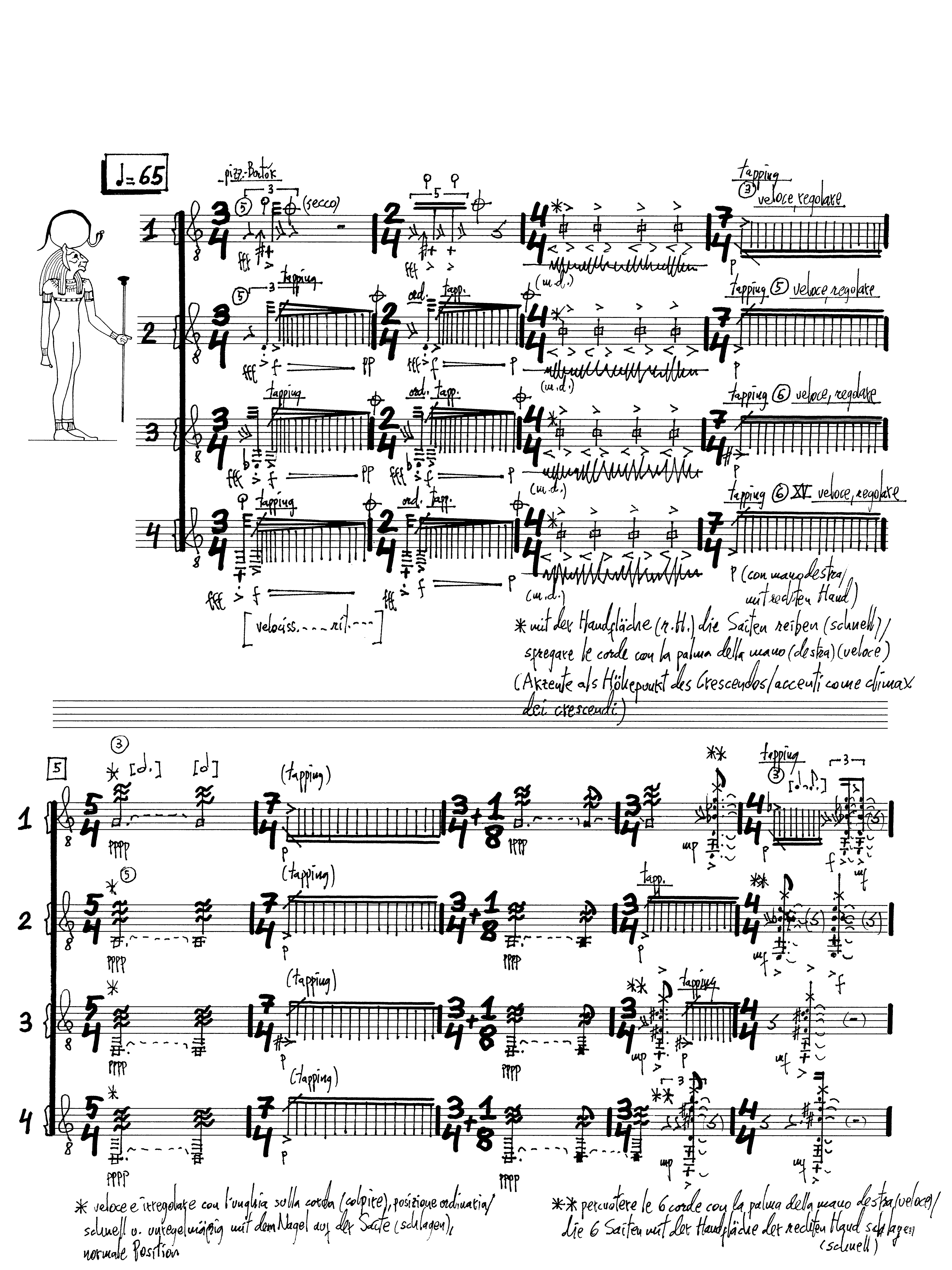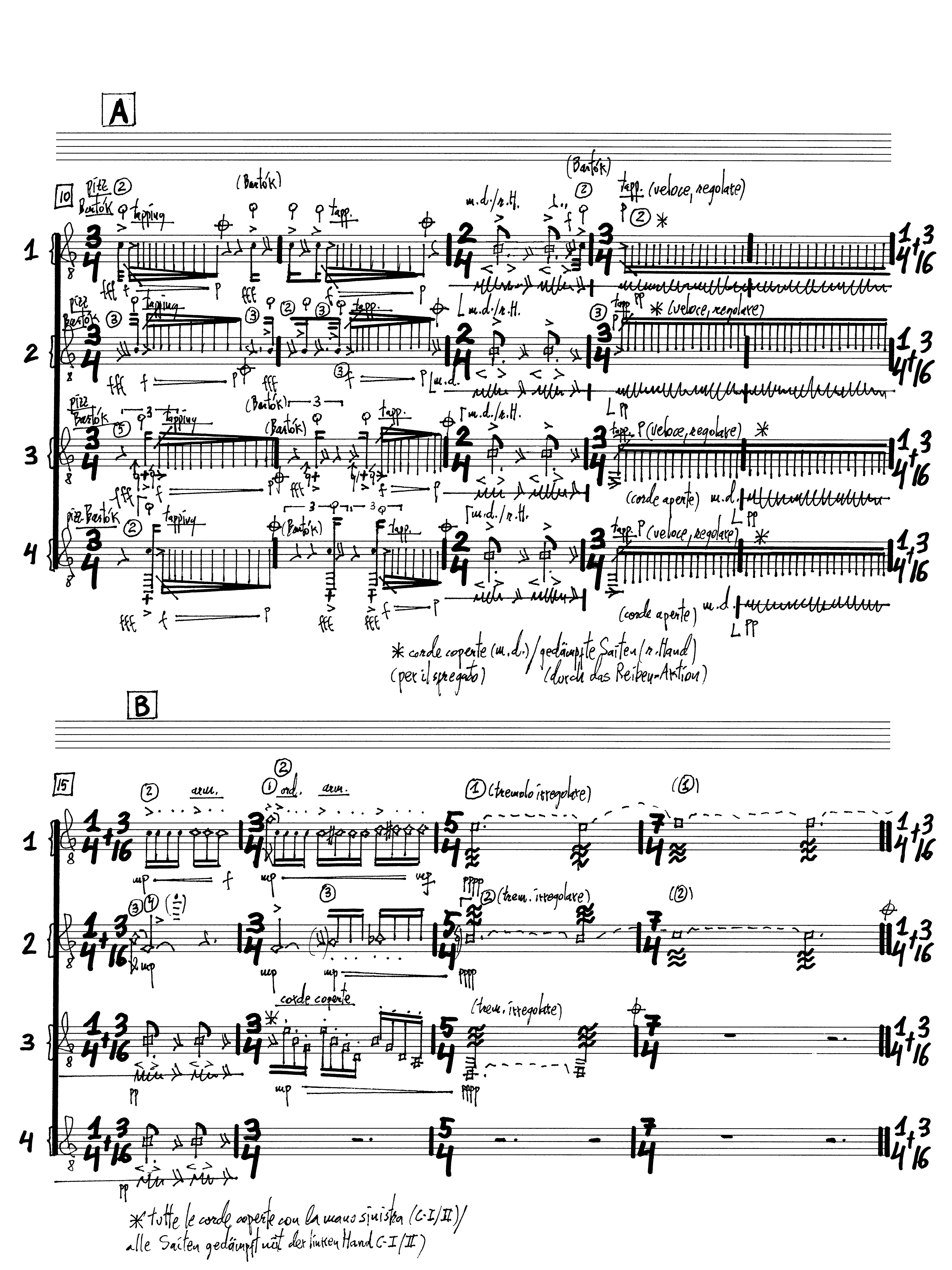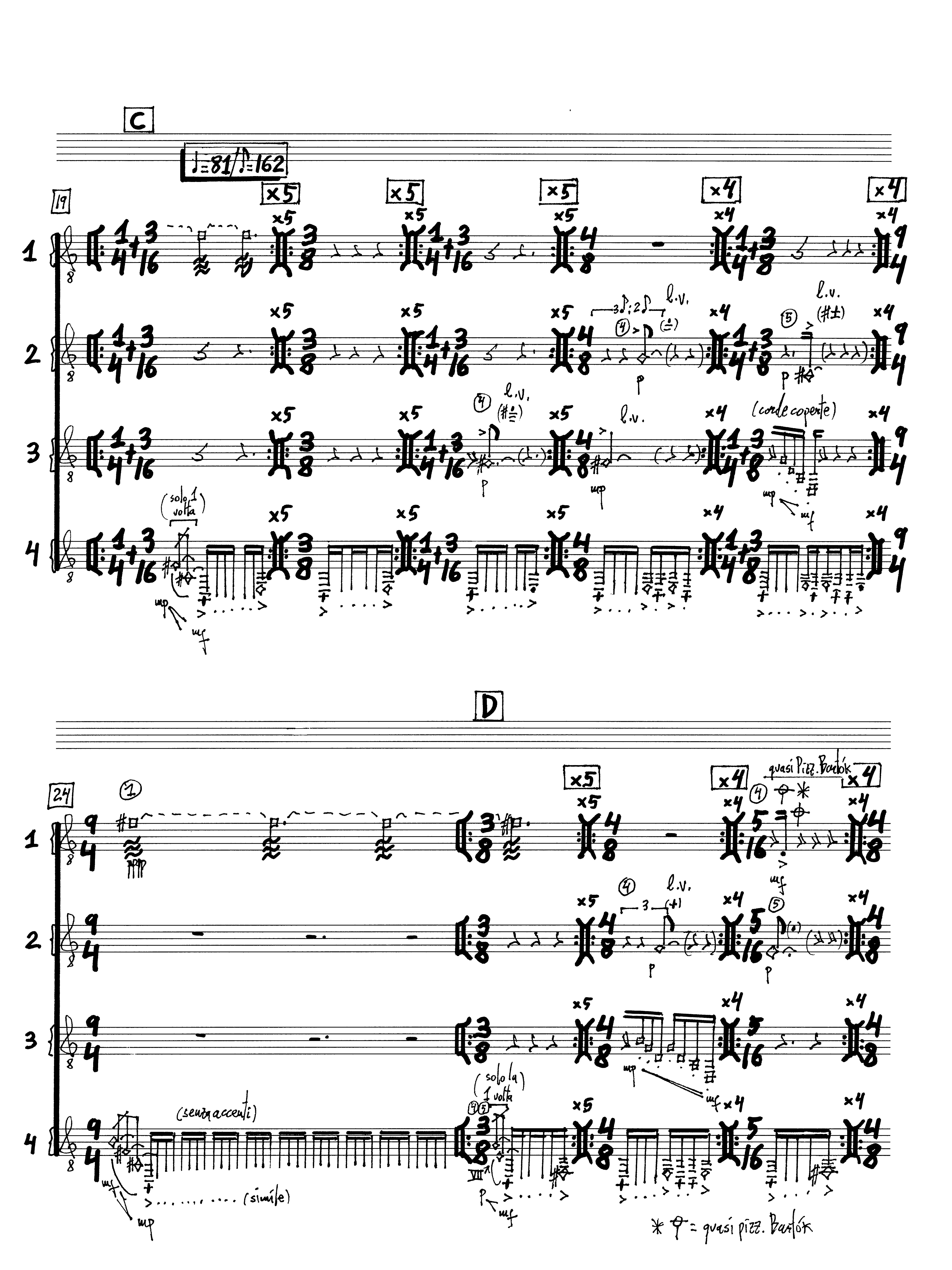José M. Sánchez-Verdú
SAKKARA für Gitarrenquartett for Guitar Quartet
Partitur Score
Edition Breitkopf 9468

SAKKARA für Gitarrenquartett for Guitar Quartet
Partitur Score
Edition Breitkopf 9468
Dieses Triptychon für Gitarrenquartett ist inspiriert von der Trilogie der Götter von Memphis im alten Ägypten. Das Werk ist eine poetische Reise durch die mythologischen Landschaften dieser Welt um 3000 vor Christus. Sakkara ist die Hochebene südlich von Kairo, auf der sich ein ganzes Gebiet entwickelt hat, das durch Gräber und den Bau der ersten Pyramiden ideal für eine Kultur des Jenseits war. Imhotep, der große Architekt der 3. Dynastie in diesem Gebiet von Sakkara, mit seiner Stufenpyramide des Djoser, der zu seiner Zeit fast ein Gott war, spielte dabei eine Schlüsselrolle.
Die Trilogie besteht aus dem Ehepaar Ptah und Sekhmet sowie Nefertem, ihrem Sohn. Ptah ist der Schutzherr der Künstler und gleichzeitig der Messgott der Zeit. Sekhmet war die Frau und Schwester von Ptah, der Kriegsgöttin, die mit dem Sonnengott verwandt ist und mit der Farbe Rot
This triptych for guitar quartet takes as inspiration the trilogy of gods of Memphis in ancient Egypt. The work is a poetic journey through the mythological landscapes of their world around 3000 BC. Sakkara is a plateau south of Cairo, where an ideal space for a culture of the afterlife developed, through tombs and the construction of the first pyramids. To this contributed the fundamental role of Imhotep, the great architect in the III Dynasty from the Sakkara area, who was almost a god in his time and most likely responsible for the stepped pyramid of Djoser.
The trilogy is formed by the couple Ptah and Sekhmet, and Nefertem, their son. Ptah is the patron of artists, and at the same time the god for measuring time. Sekhmet was the wife and sister of Ptah, goddess of war — related to the Sun
Este tríptico para cuarteto de guitarra toma como inspiración la trilogía de dioses de Menfis en el Egipto antiguo. La obra es un viaje poético por los paisajes de la mitología de ese mundo en torno al 3000 antes de Cristo. Saqqara es la meseta situada al sur de El Cairo en la que se desarrolló todo un espacio ideal para una cultura del más allá a través de tumbas y de la construcción de las primeras pirámides. A ello contribuyó el papel fundamental de Imhotep, el gran arquitecto en la III Dinastía de ese espacio de Saqqara, con su pirámide escalonada de Djoser, y casi un dios en su tiempo.
La trilogía está formada por la pareja Ptah y Sekhmet, y Nefertem, su hijo. Ptah es el patrón de los artistas, y a la vez el dios medidor del tiempo. Sekhmet era esposa y a la vez hermana de Ptah, diosa de la guerra, relacionada con el dios
assoziiert wird. Nefertem, ihr Sohn, war der Gott des Duftes, des Parfüms, verbunden mit der Lotosblume, dem Symbol der Wiedergeburt. Die drei Sätze dieser Komposition sind musikalische Räume, die auf poetischen Assoziationen rund um eine mythische Welt und einen Raum entstehen, der mich schon immer fasziniert hat: Sakkara.
Das Werk ist ein Auftragswerk des Aleph-Gitarrenquartetts, das auch der Widmungsträger ist
1. Ptah (Grammatik der Zeit)
2. Sekhmet (Grammatik des Feuers)
3. Nefertem (Grammatik der Lotusblume)
José M. Sánchez-Verdú, 2022god and associated with the color red. Nefertem, son of both, was the god of fragrance, of perfume and linked to the lotus flower, the symbol of rebirth. The three movements of this composition are musical spaces created on poetic associations around this mythical world and in an area that has always fascinated me: Sakkara.
The work is commissioned by the Aleph-Gitarrenquartett, which is also its dedicatee.
1. Ptah (grammar of time)
2. Sekhmet (grammar of fire)
3. Nefertem (grammar of the lotus flower)
José M. Sánchez-Verdú, 2022Sol y asociada al color rojo. Nefertem, hijo de ambos, era el dios de la fragancia, del perfume, vinculado a la flor del loto, símbolo del renacer. Los tres movimientos de esta composición son espacios musicales creados sobre asociaciones poéticas en torno a un mundo mítico y a un espacio que siempre me ha fascinado: Saqqara.
La obra es encargo del Aleph-Gitarrenquartett, que es también su dedicatario.
1. Ptah (gramática del tiempo)
2. Sekhmet (gramática del fuego)
3. Nefertem (gramática de la flor de loto)
José M. Sánchez-Verdú, 2022 José M. Sánchez-Verdú, 2022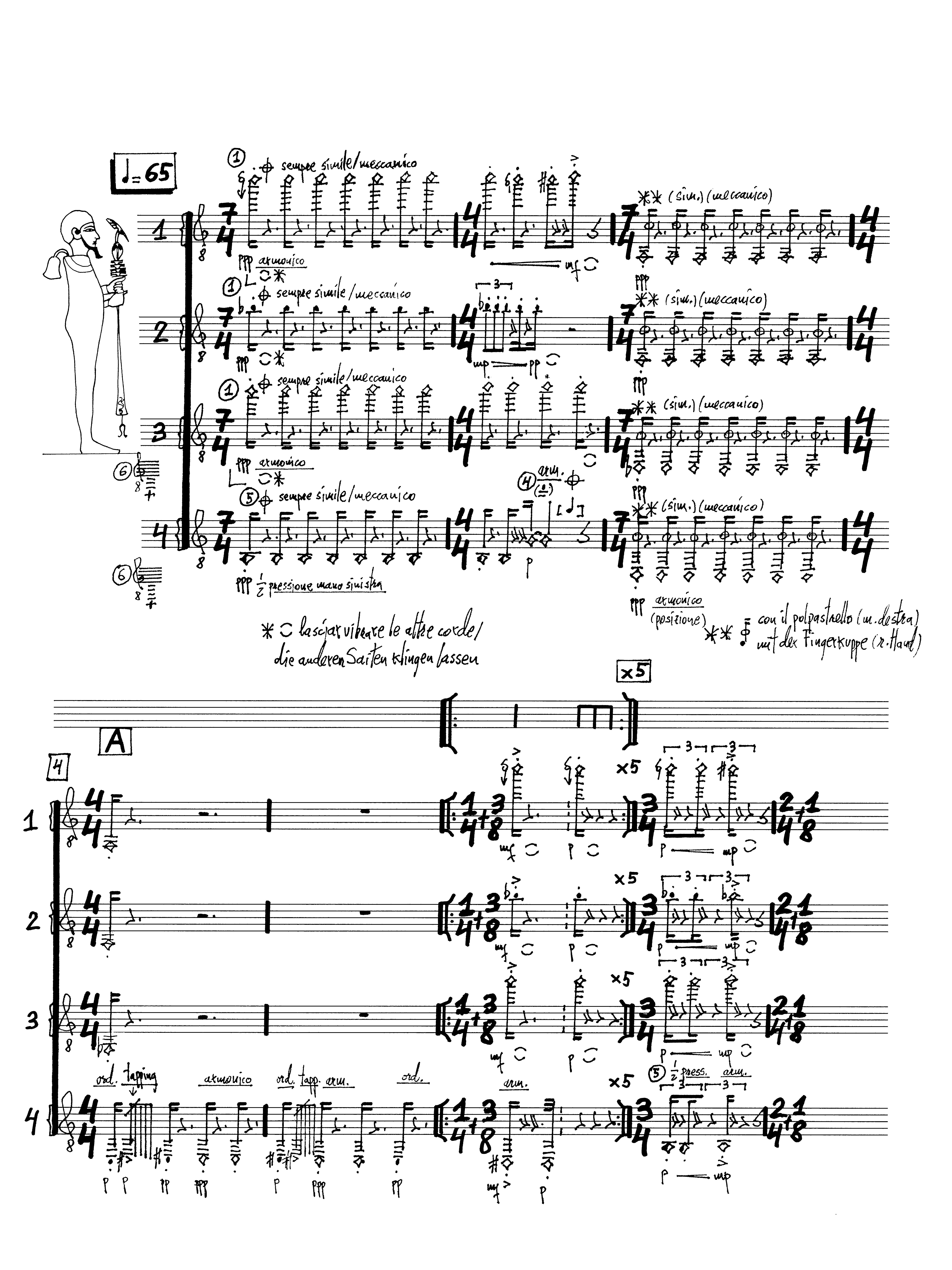
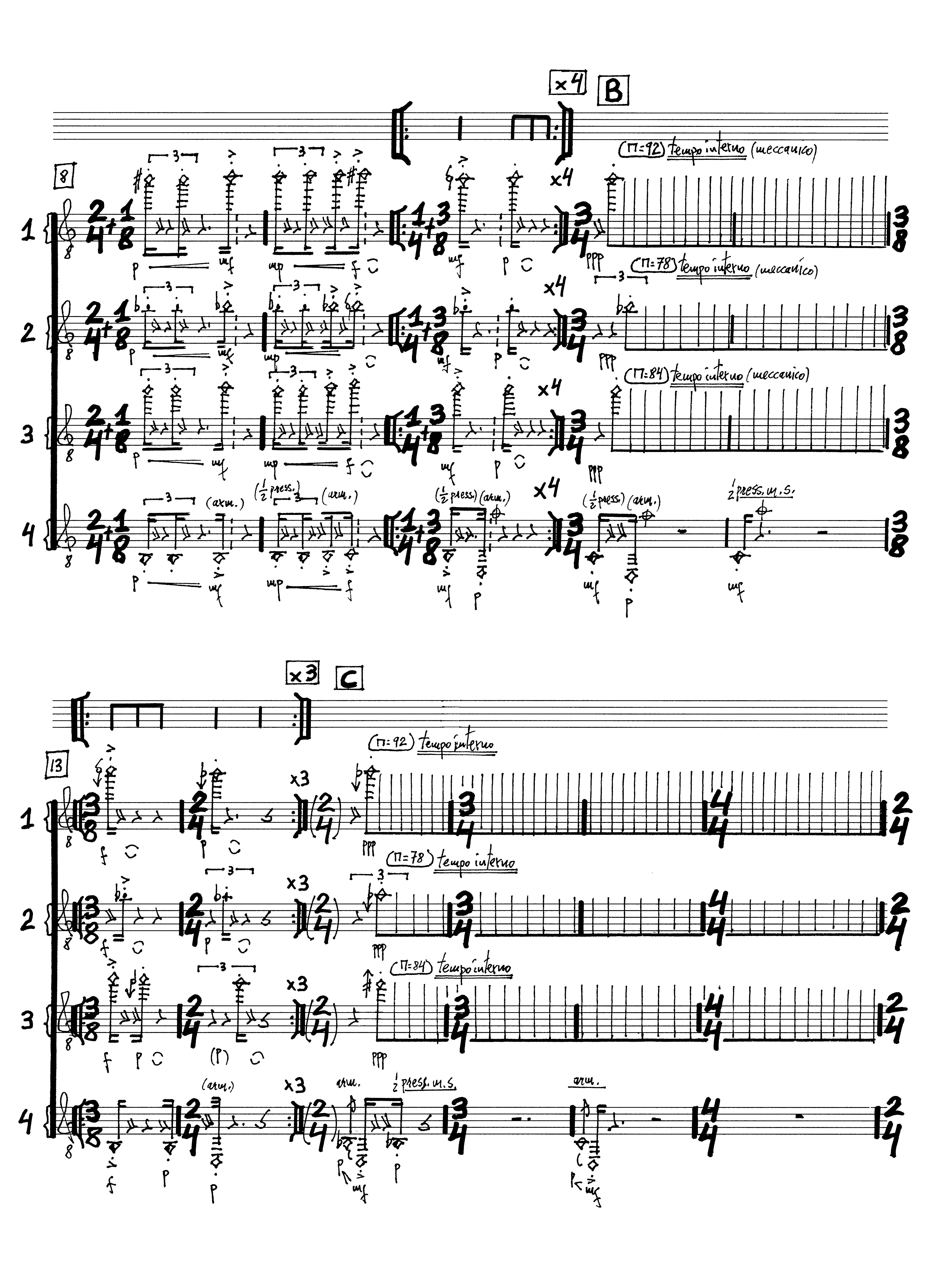
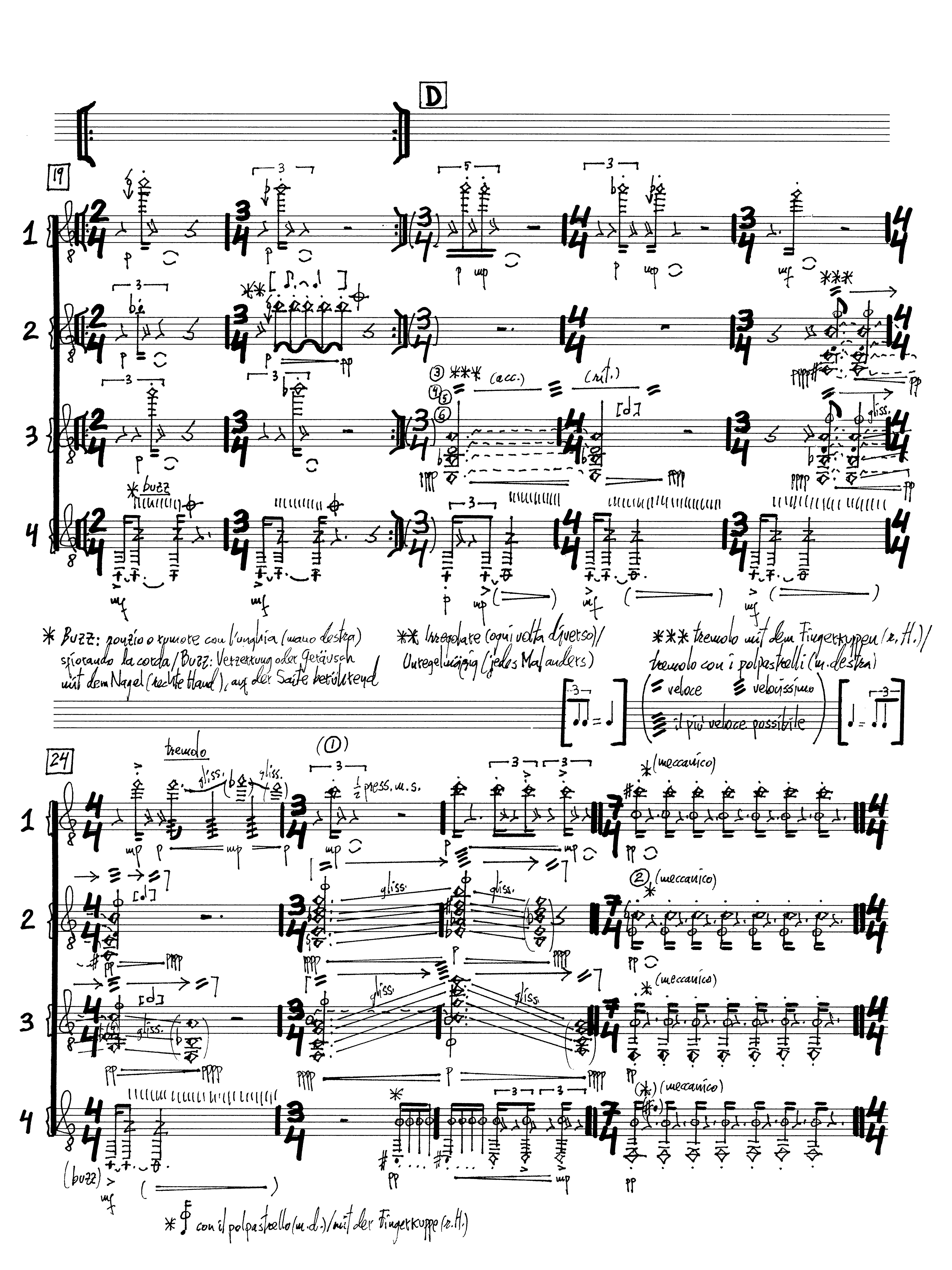
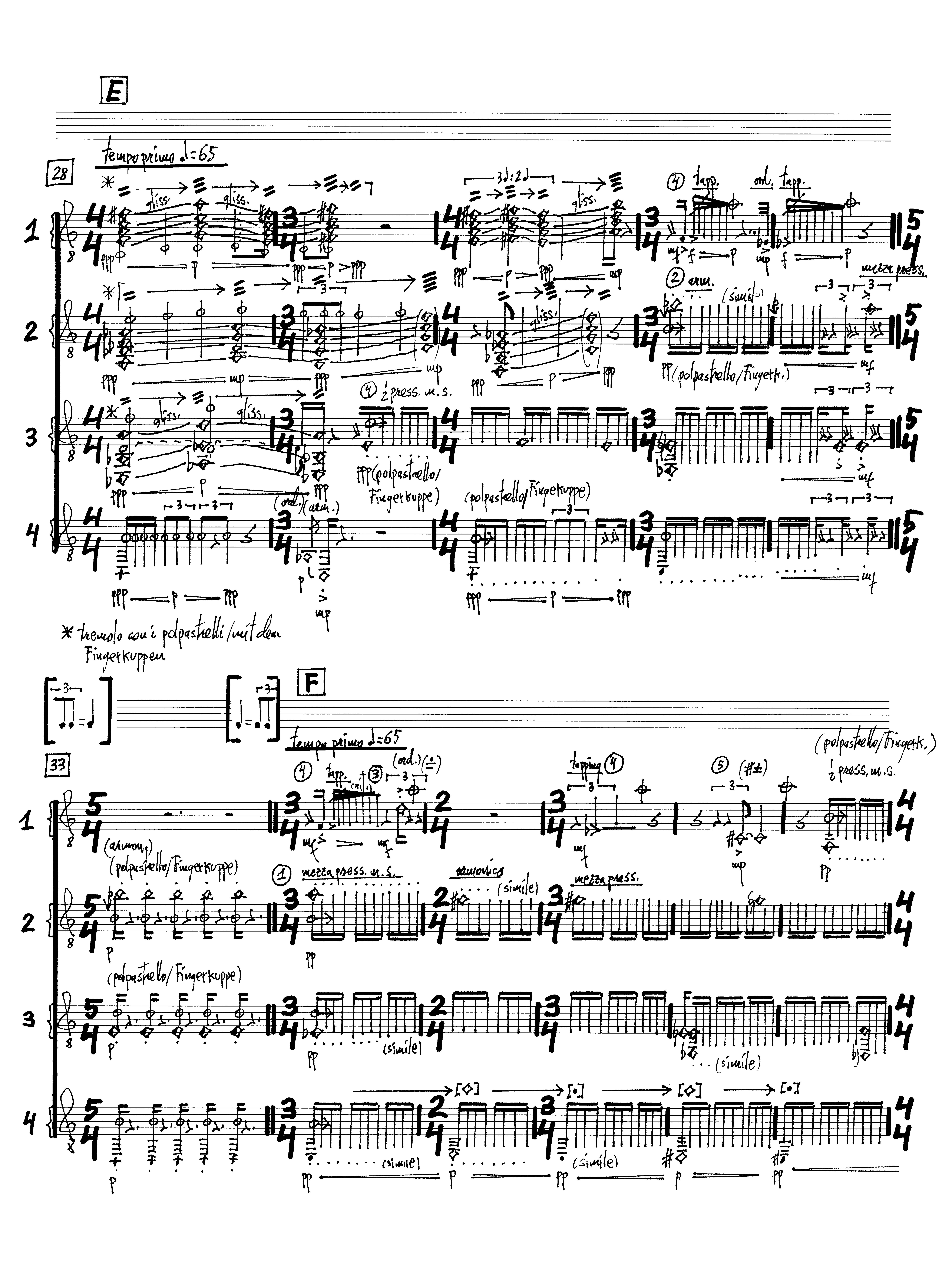


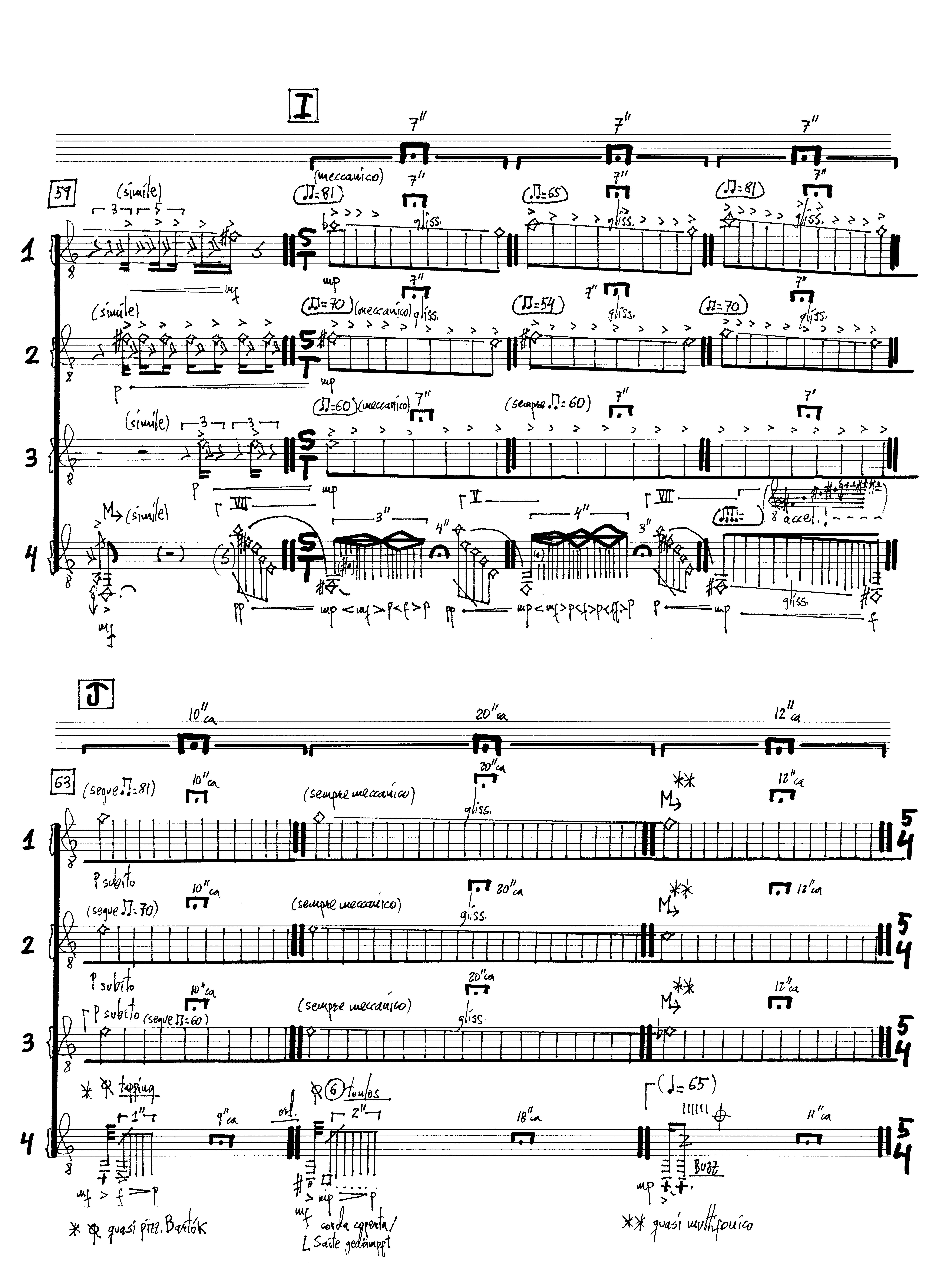

2. SEKHMET (Grammatik des Feuers)
